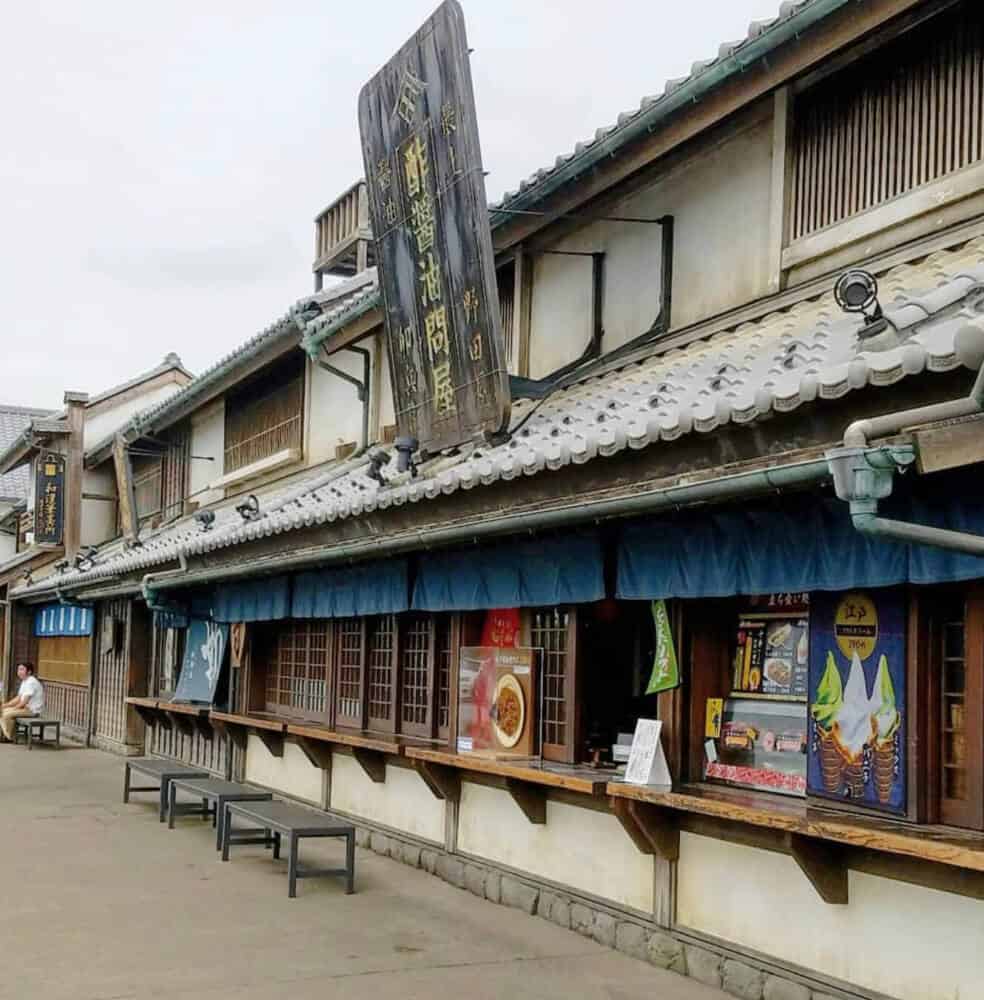Imagine pulling over at a highway rest stop and finding yourself transported to the past. If you’re venturing along the Tohoku Expressway, you might just stumble upon such a magical experience at the Hanyu Parking Area in Saitama Prefecture.
Far from your typical rest area, this spot holds a gateway to Edo Japan, dating back to a time between 1745 and 1829.

Right by the Hanyu Parking Area, you can spot the Kurihashi Checkpoint, a significant historic site that echoes the strong connection of this region to the Edo era.


This checkpoint was once a critical spot on the Nikko-Kaido, serving as a contact point between past travelers and the authorities of the Tokugawa Shogunate, keeping a close eye on the comings and goings to prevent rebellions.
Here’s the twist: there’s no admission fee. You can enjoy the ambiance of a traditional Edo town replete with period-specific architecture, without spending a dime to get in.
The experience even includes a dynamic “sky” feature which oscillates from daytime to nighttime, enhancing the feeling of a living, breathing museum.
Diving into the culinary delights, you’re in for a treat with the flavors of a bygone epoch. The eateries here are a nod to Onihei Hankacho, a famed series of historical novels.



- Related: Most Surprising Rest Stops in Japan

You can relish Japanese cuisine that Onihei himself, the famed leader of the special police in the Edo era, would have savored. Each restaurant presents a menu inspired by this era, offering a blend of authenticity and culinary adventure.
One must-try is the Hiroshima-style Okonomiyaki Taiyaki at the Bunraku Yaki Honpo.
The sweet shell of traditional taiyaki is ingeniously stuffed with a savory combination of bacon, cabbage, noodles, and other ingredients to tantalize your taste buds.
When you step into Hanyu Parking Area, allow the combination of historic architecture and distinctive dining to carry you back in time to the days of the samurai and savories of old Japan.
Next time you’re on the Tohoku Expressway, make sure to plan a pit stop here—you won’t regret it!
What Will You Find at an Edo-Era Themed Roadside Stop?
- Environment: Step into a slice of history, where the service area mimics the architecture and vibe from Japan’s historical Edo period.
- Activities: Try old-fashioned games, witness performances, and even dress in traditional Edo-era costumes.
Is There Something for History Buffs at These Rest Stops?
- Educational Exhibits: Discover historical checkpoints that offer insights into the traveler’s experiences during the Edo period.
- Cultural Significance: These sites often celebrate regional stories and the local heritage tied to that era.
Edo Rest Stop Vs. Museum: What’s Different?
- Interactivity: These stops focus on immersive experiences where you can engage in the activities, unlike static museum exhibits.
- Authenticity: It’s a dynamic way to experience history by actually walking through a reconstructed Edo-era scene.
What Kind of Edo-Styled Treats and Keepsakes Can You Get?
- Cuisine: Savor traditional Japanese dishes that were popularized during the Edo period.
- Merchandise: Collect artisanal crafts and Edo-inspired items as mementos of your travel.
What’s the Vibe at an Edo-Inspired Rest Area?
- Ambiance: Feel a sense of nostalgia with the sights, sounds, and smells that recreate the Edo atmosphere.
- Activities: Engage with local artisans and watch as they demonstrate ancient craftsmanship.
Insights into the Edo Period for a Fulfilling Rest Stop Experience
- Historical Context: Learn about the Edo period’s significance, from its social structure to its cultural achievements, to enrich your visit.
- Notable Figures: Familiarize yourself with famous individuals from the era and their contributions to appreciate the themed environment.
Remember, visiting an Edo period-inspired rest stop is more than just a break from driving—it’s a journey into Japan’s past.
My writing focuses on the various aspects of Japanese lifestyle, from traditional tea ceremonies and flower arrangement to modern fashion trends and pop culture. Through my articles, I aim to share my passion for Japan and provide readers with a glimpse into the rich and diverse world of Japanese culture.
I believe that the key to understanding Japanese lifestyle is to appreciate the balance between tradition and innovation. While Japan has a rich cultural heritage that dates back centuries, it is also a country that is constantly evolving and embracing new ideas and technologies.
Whether you’re interested in learning about the latest fashion trends in Tokyo, or want to explore the ancient art of calligraphy, my writing will take you on a journey through the many facets of Japanese lifestyle. So join me as we explore the beauty and complexity of this fascinating culture together!





